Removal Procedure
Caution: An electric fan under the hood can start up even when the engine is not running and can injure you. Keep hands, clothing and tools away from any underhood electric fan.
- Disconnect the negative battery negative cable. Refer to Battery Negative Cable Disconnection and Connection in Engine Electrical.
- Remove the secondary AIR cut-off bracket bolts and bracket from the cooling fan.
- Remove the intake air resonator. Refer to Intake Air Resonator Replacement in Engine Controls - 3.0L.
- Remove the upper radiator covers:
- Disconnect the primary fan motor electrical connector.
- Disconnect the primary fan cooling switch electrical connector.
- Remove the auxiliary water pump clips and the auxiliary water pump from the fan shroud.
- Remove the transmission oil cooler fitting bolt.
- Remove the transmission oil cooler bracket bolt and reposition the transmission oil cooler lines.
- Remove the fan shroud bolts and remove the fan shroud from the vehicle.
- Remove the fan motor nuts (1).
- Remove the fan motor from the fan shroud.
- Remove the fan blade retainer clip (1).
- Remove the fan blade from the fan motor.
Caution: Before servicing any electrical component, the ignition and start switch must be in the OFF or LOCK position and all electrical loads must be OFF, unless instructed otherwise in these procedures. If a tool or equipment could easily come in contact with a live exposed electrical terminal, also disconnect the negative battery cable. Failure to follow these precautions may cause personal injury and/or damage to the vehicle or its components.
| • | Release the self-locking tabs. |
| • | Remove the cover screws. |
| • | Remove the covers. |
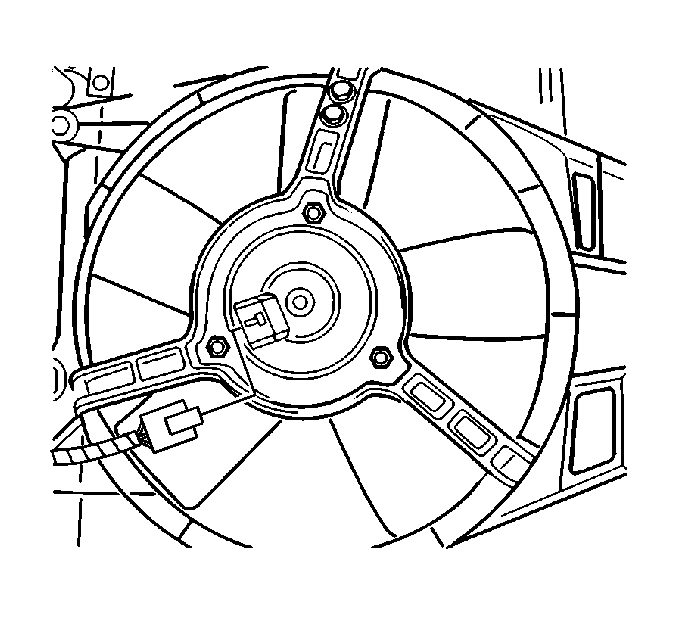
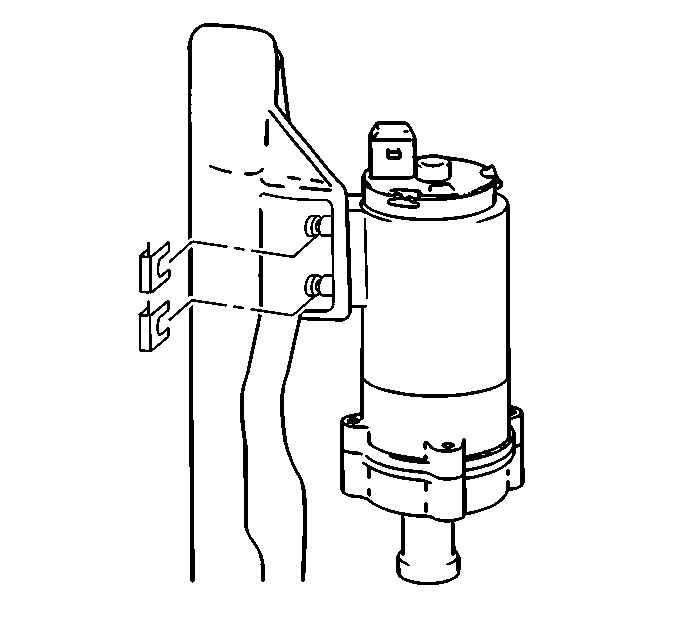
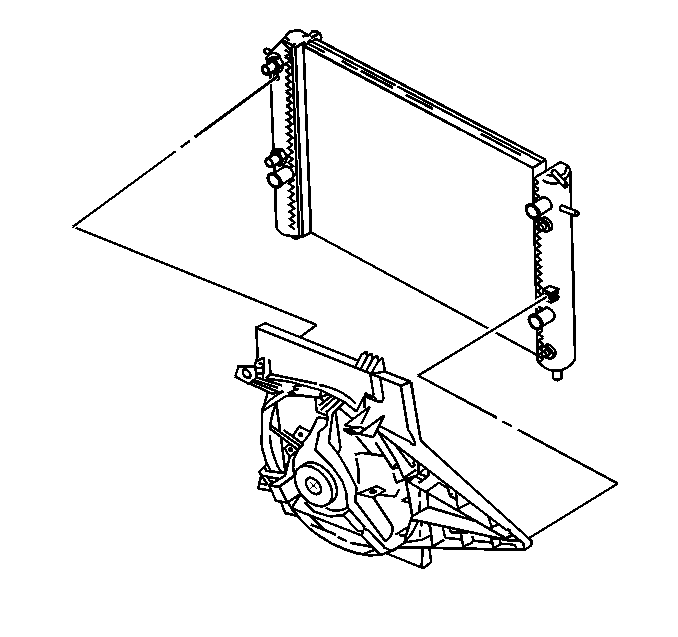
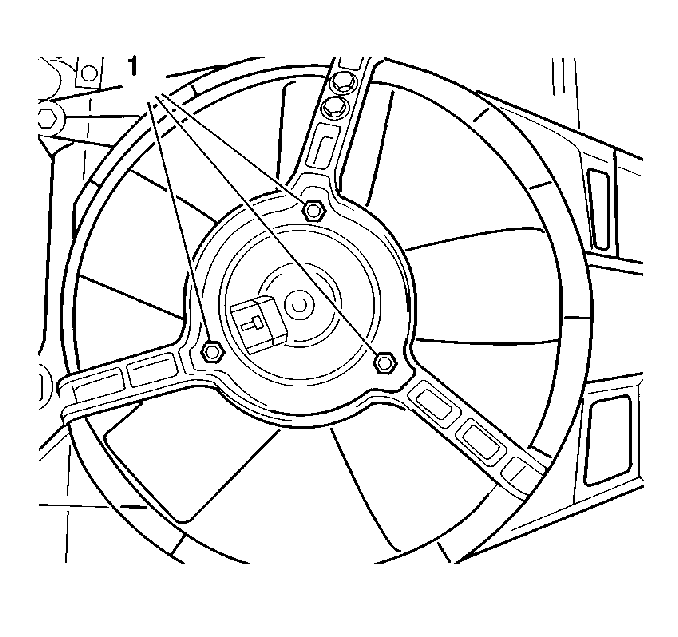
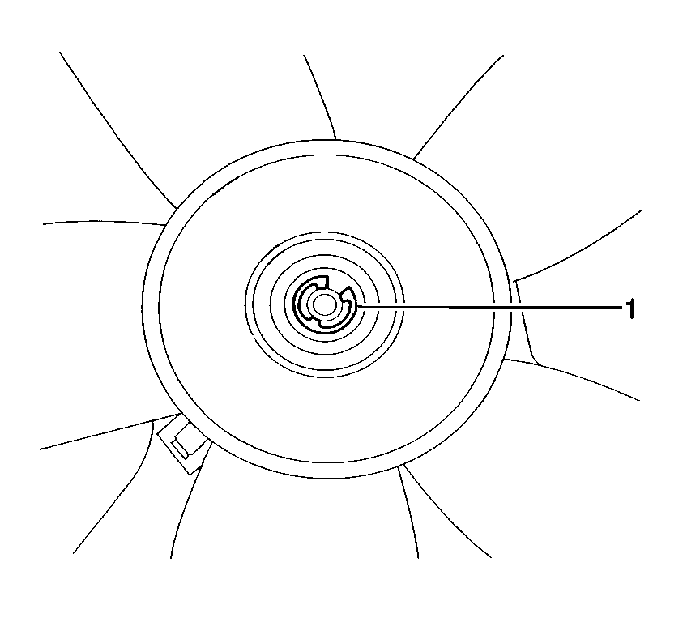
Installation Procedure
- Install the fan blade to the fan motor.
- Install the fan blade retainer clip (1).
- Install the fan motor to the fan shroud.
- Install the fan motor nuts (1).
- Install the fan shroud to the vehicle.
- Install the fan shroud bolts (1).
- Install the upper transmission oil cooler pipe fitting and seals.
- Install the transmission oil cooler fitting bolt.
- Install the transmission oil cooler bracket bolt.
- Install the auxiliary water pump to the fan shroud.
- Install the auxiliary water pump retaining clips.
- Connect the primary cooling fan switch electrical connector.
- Connect the primary cooling fan electrical connector.
- Install the upper radiator covers:
- Install the intake air resonator. Refer to Intake Air Resonator Replacement in Engine Controls - 3.0L.
- Install the secondary AIR cut-off valve bracket.
- Install the secondary AIR cut-off valve bracket bolts.
- Connect the negative battery cable. Refer to Battery Negative Cable Disconnection and Connection in Engine Electrical.


Notice: Use the correct fastener in the correct location. Replacement fasteners must be the correct part number for that application. Fasteners requiring replacement or fasteners requiring the use of thread locking compound or sealant are identified in the service procedure. Do not use paints, lubricants, or corrosion inhibitors on fasteners or fastener joint surfaces unless specified. These coatings affect fastener torque and joint clamping force and may damage the fastener. Use the correct tightening sequence and specifications when installing fasteners in order to avoid damage to parts and systems.
Tighten
Tighten the fan motor nuts to 4 N·m (35 lb in).
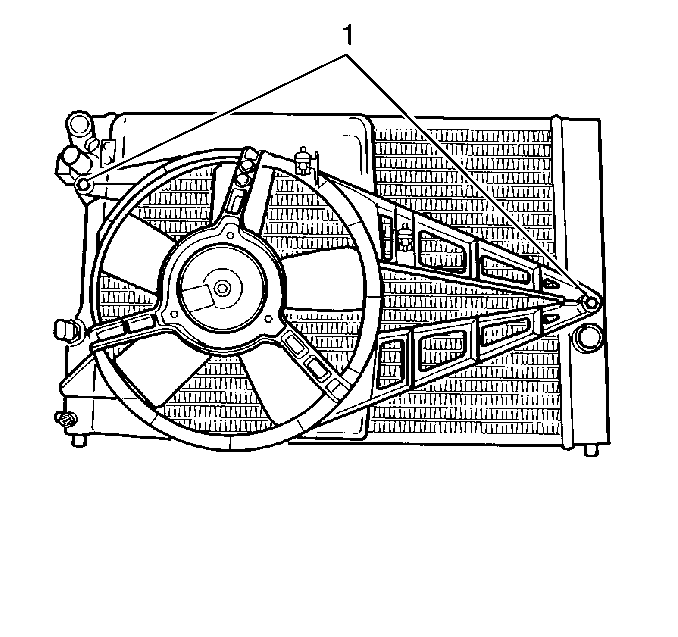
Tighten
Tighten the fan shroud bolts to 4 N·m (35 lb in).
Tighten
Tighten the transmission oil cooler fitting bolt to 25 N·m
(18 lb ft).
Tighten
Tighten the transmission oil cooler bracket bolt to 25 N·m
(18 lb ft).


| • | Position the covers. |
| • | Insert the self-locking tabs. |
| • | Install the radiator cover screws. |
Tighten
Tighten the radiator cover screws to 4 N·m (35 lb in).
Tighten
Tighten the secondary AIR cut-off valve bolts to 4 N·m
(35 lb in).
